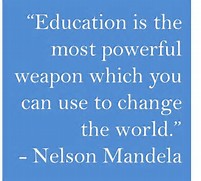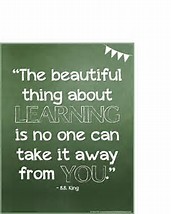This week is our last week in EDUC-6162-2,Issue & Trend Early Childhood.2017 Summer Semester 05/08-08/27-PT2 and as I embark on this last blog there are many new ideas I take with me as I proceed toward better communication and understanding within the early childhood field.
As I have shared many times before early childhood education is more than sitting and watching babies it is a reflection of how an adult teaches children to be independent, feel accomplished and learn that practice makes perfect.
In this blog I will share three consequences of learning about the international early childhood field for my professional and personal development . As a professional there are many resources that guide my daily learning, in researching international outlooks I was able to find information that helps create relationships among our undocumented families.
The one website that help me understand how to address certain situations within the community I provide services for is U.S. Department of Education in this website you gain information on the Importance of Integration. Integration is something I recommend within the classrooms it provides a sense of consistency as well as proper planning among the teachers and it also provides families with a new form of learning among other cultures.
This is a piece from the website that shares the importance of integration
Importance of Integration
Currently, there are over 4.7 million foreign born individuals enrolled in pre-kindergarten to postsecondary education, representing 6% of the total student population. Another 20 million students are the children of foreign born parents.
As a nation of immigrants, America has benefited from the vitality and enthusiasm brought to its shores by those seeking a better life. Successful immigrant and refugee integration efforts build the capacity of schools and early learning programs, communities, organizations, and other stakeholders to support the civic, linguistic, and economic integration of immigrants
The programmatic efforts of the U.S. Department of Education (ED) support a number of immigrant populations, including immigrant children (e.g., unaccompanied youth) and the children of immigrants, Deferred Action for Childhood Arrivals (DACA) children and youth, immigrant families, adult immigrants (e.g. refugees, asylees), foreign-born professionals, migrant students, teachers of English learners and foreign languages, and receiving communities. ED’s initiatives geared toward learners, teachers, schools and communities support all three pillars of immigrant integration: civic, economic, and linguistic integration.
The next website that encourages learning and child development is known as http://www.tandfonline.com or taylor and francis online this website provides many articles that benefit learning and structure among early childhood education.
One article talks about Cross-cultural interpretations of changes in early childhood education in the USA, Russia, and Finland. The purpose of this article was to see the changes that have taken place in center -based early childhood education (ECE) in the USA, Russia, and Finland between 1991 and 2014. As a provider for 13 years I have noticed many changes within ECE. It is not about play, play is involved because it is how our children learn. We also use tools that allow for children to make decisions process thoughts it is curriculum based. In my school we use the Montessori curriculum along with teaching strategies gold. These two pieces connect by providing materials that are useful in learning to build, count, identify sounds, gross and fine motor involved. While teachers use observational tools to make sure the children understand how and what they are learning, it is all about consistency of care.
The last website I would like to share is known as http://www.hipatiapress.com. This website shares many different articles based on early childhood the one piece that I emphasize on when working with others is the dialogue we use. In this article the idea is Dialogue and Interaction in Early Childhood Education: A Systematic Review.
According to Rocío García-Carrión, Lourdes Villardón-Gallego There is solid evidence that high quality Early Childhood Education (ECE hereafter) have substantial impact on later life outcomes. A growing literature suggests that interventions that develop social competency as well as cognitive, language and academic skills in the earliest years play a role in later educational, social and economic success. Less is known about the most conducive interactions -verbal and non-verbal- underpinning such pedagogical practices in early childhood education. This article aims at reviewing the last decade’s early childhood education with a twofold objective: (a) to describe how dialogue and interaction take place in high-quality early childhood education settings; (b) to identify the effects, if any, on children’s learning and development as a result of implementing dialogue-based interventions in ECE. The studies were identified through systematic search of electronic databases and analyzed accordingly. Several types of interactions given in high quality ECE programs and its short and long-term effects are discerned in this review.
I agree with all of the topics within the websites they share how early childhood is a positive outlook within the community, how it provides services that lead to productive outcomes through out life, they also share how teachers grow and evolve within their early childhood carrier. How nations come together to identify substantial learning for everyone involved in early childhood it is more than play it is about building relationships among all involved in the child’s learning.
It is true when literature states that it takes a village to raise a child. I see it everyday and hold it as a reflection of the learning that teachers provide to their students and the passion parents have when they return and become part of the school environment.
My Personal Development
While learning and understanding more on early childhood education I have learned that patience and passion are two things that must connect when working within the early childhood field. I grew up among many boys and always had to be assertive and take control as I grew older I continue to care for my cousins and sibling, I was teaching from very young and did not realize until I began in the field as an assistant teacher for children with special needs. As I took courses and learned what special needs was I was able to identify two of my cousins and my brother with learning disabilities, where as before I would ignore it or tell them to stop if they did something embarrassing. In learning about them I learned about myself and made it my goal to make sure everyone can learn no matter what their delay may be. The three men I am proud to call my own have excelled many expectations. They each followed their dream jobs and live fulfilling lives two work for the city of New York and one is a chef. In helping them I have grown to feel that the harder your work and the belief within yourself provides many opportunities to grow and learn.
I will continue to provide for the unspoken, the poor, undocumented and the one who doesn’t see their potential. My goal is to lead by example and provide a better environment for all the children of the world.
Thank you
I would like to take this time to say Thank you for your post and providing me with long lasting connections it has been a blessing to read and learn about so many wonderful people who strive for success among themselves and the children they work with.
Continued Success to us all the best of luck in your future endeavors.
References
U.S. Department of Education


 The collaborative Núcleo Ciência Pela Infância (NCPI) includes the Center on the Developing Child, Fundação Maria Cecilia Souto Vidigal (FMCSV), the Medical School of the University of São Paulo, Insper, Sabará Children’s Hospital, and the David Rockefeller Center for Latin American Studies at Harvard. This partnership has been highly successful in creating a science-driven early childhood movement in Brazil.
The collaborative Núcleo Ciência Pela Infância (NCPI) includes the Center on the Developing Child, Fundação Maria Cecilia Souto Vidigal (FMCSV), the Medical School of the University of São Paulo, Insper, Sabará Children’s Hospital, and the David Rockefeller Center for Latin American Studies at Harvard. This partnership has been highly successful in creating a science-driven early childhood movement in Brazil. The Alberta Family Wellness Initiative (AFWI) shares our strong belief in the power of translating the science of child development to inform public policy.
The Alberta Family Wellness Initiative (AFWI) shares our strong belief in the power of translating the science of child development to inform public policy. The Aceleradora de Innovación para la Primera Infancia, one of the
The Aceleradora de Innovación para la Primera Infancia, one of the  A partnership led by Grand Challenges Canada,
A partnership led by Grand Challenges Canada, 
